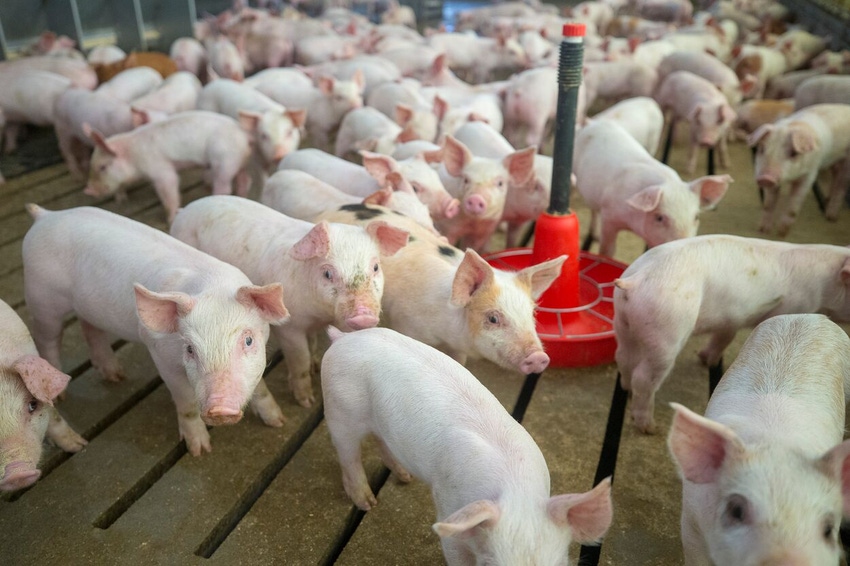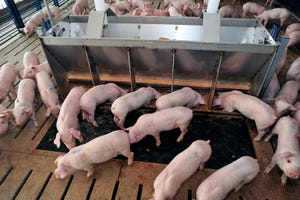Increasing phosphorus digestibility in novel corn fermented products
Emergence of a new functional plant-based protein provides formulators with another protein choice for formulation of nursey diets.
July 27, 2023

Formulating nursery diets for neonatal and nursery swine to stimulate feed intake and growth of weaned pigs is a challenge and traditional protein sources may not always stimulate appetite or positively impact measured production parameters. The emergence of a new functional plant-based protein containing corn fermented protein, fermented fiber and spent yeast components provides formulators with another protein choice for formulation of nursey diets.
The use of new processing technology in the dry grind ethanol industry allows for fractionation of the whole stillage by mechanically separating some of the non-protein components from the protein, which results in production of corn co-products containing approximately 50% crude protein. This separation technology was developed by Fluid Quip Technologies and is called Maximized Stillage Co-Products.
In the dry grind procedure to produce ethanol, the fermentation step normally last from 50 to 55 hours. During this time, a range of enhancements have been implemented including addition of enzymes to aid in the conversion of starch to glucose to produce ethanol.
Phytase may be one of the enzymes that are added to improve the efficiency of fermentation. However, the use of phytase during fermentation may impact the nature of phosphorus in post fermentation products, which may subsequently alter the concentrations of phytate-bound and non-phytate P. As a consequence, this may influence digestibility and concentration of digestible P in corn co-products derived from fermentation.
Therefore, an experiment was conducted to determine the standardized total tract digestibility of P in high protein corn fermented products and in the residual distillers dried grains with solubles produced from a fermentation without or with the use of phytase. It is also the objective of this experiment to test the hypothesis that inclusion of phytase during the fermentation process increases P digestibility in corn co-products derived for ethanol biorefinery production.
Three sources of high protein corn fermented products (i.e., CFP-50%, ET-CFP50%, and ET-CFP60%) and two sources of Post-MSC DDGS were procured (Fluid Quip Technologies, Cedar Rapids, Iowa). Two sources of high protein corn fermented products (i.e., ET-CFP50% and ET-CFP60%) and one source of Post-MSC DDGS (i.e., ET-Post-MSC DDGS) were treated with microbial phytase during the fermentation process, whereas phytase treatment was not performed for the two other corn co-products. Five diets were formulated with corn co-product being the only source of P in these diets, and five additional diets were formulated similarly to the previous two diets with the exception that 500 units of phytase/kg were added to these diets. Eighty pigs (14.38 ± 1.50 kg) were housed in metabolism crates and allotted to ten diets with eight replicate pigs per diet. Fecal samples were collected for 4 days following the adaptation period.
Results
A reduction in concentration of phytate-bound P and a subsequent increase in concentration of myo-inositol was observed in corn co-products that were treated with phytase during the fermentation process (Table 1).
Enzyme treatment during fermentation reduced P excretion in feces. Inclusion of 500 FTU/kg of phytase in CFP and Post-MSC DDGS diets reduced the concentration of P in feces; however, phytase did not affect the concentration of P in feces by pigs fed diets containing the enzyme-treated corn co-products (Table 2).
Likewise, P output was reduced in pigs fed the CFP diet upon phytase supplementation; however, P output was not influenced by phytase supplementation in pigs fed diets with the other corn co-products. Due to increased P intake, P absorption was greater in pigs fed the diet containing CFP and Post-MSC DDGS compared with that of pigs fed diets with other corn co-products regardless of phytase supplementation.
Absorption of P also increased when diets were supplemented with phytase. The apparent total tract digestibility and STTD of P in the CFP and Post-MSC DDGS diets increased upon phytase supplementation; however, phytase supplementation did not influence the ATTD and STTD of P in diets containing the enzyme-treated corn co-products.
Conclusion
Concentration of phytate-bound P was less and myo-inositol concentration was greater in enzyme-treated corn co-products produced with additional enzymes in fermentation compared with corn co-products without the additional enzymes in the fermentation step. As a result, the ATTD and STTD of P in enzyme-treated corn-co products were greater compared with CFP and Post-MSC DDGS (without enzyme treatment).
Dietary supplementation of phytase increased the ATTD and STTD of P in CFP and Post-MSC DDGS. However, the addition of phytase to diets did not influence P digestibility in enzyme-treated corn co-products, which likely indicates that phytase treatment during the fermentation process is sufficient to maximize P utilization in corn co-products.
Nevertheless, it is important to appreciate that in a commercially formulated diet the impact of dietary phytase addition on the reminder of the diet must be considered. The present results indicate that attention needs to be paid as to whether phytase has been used in the dry grind fermentation step to accurately supplement the diet with P to achieve the correct nutrient balance of available P.
You May Also Like



